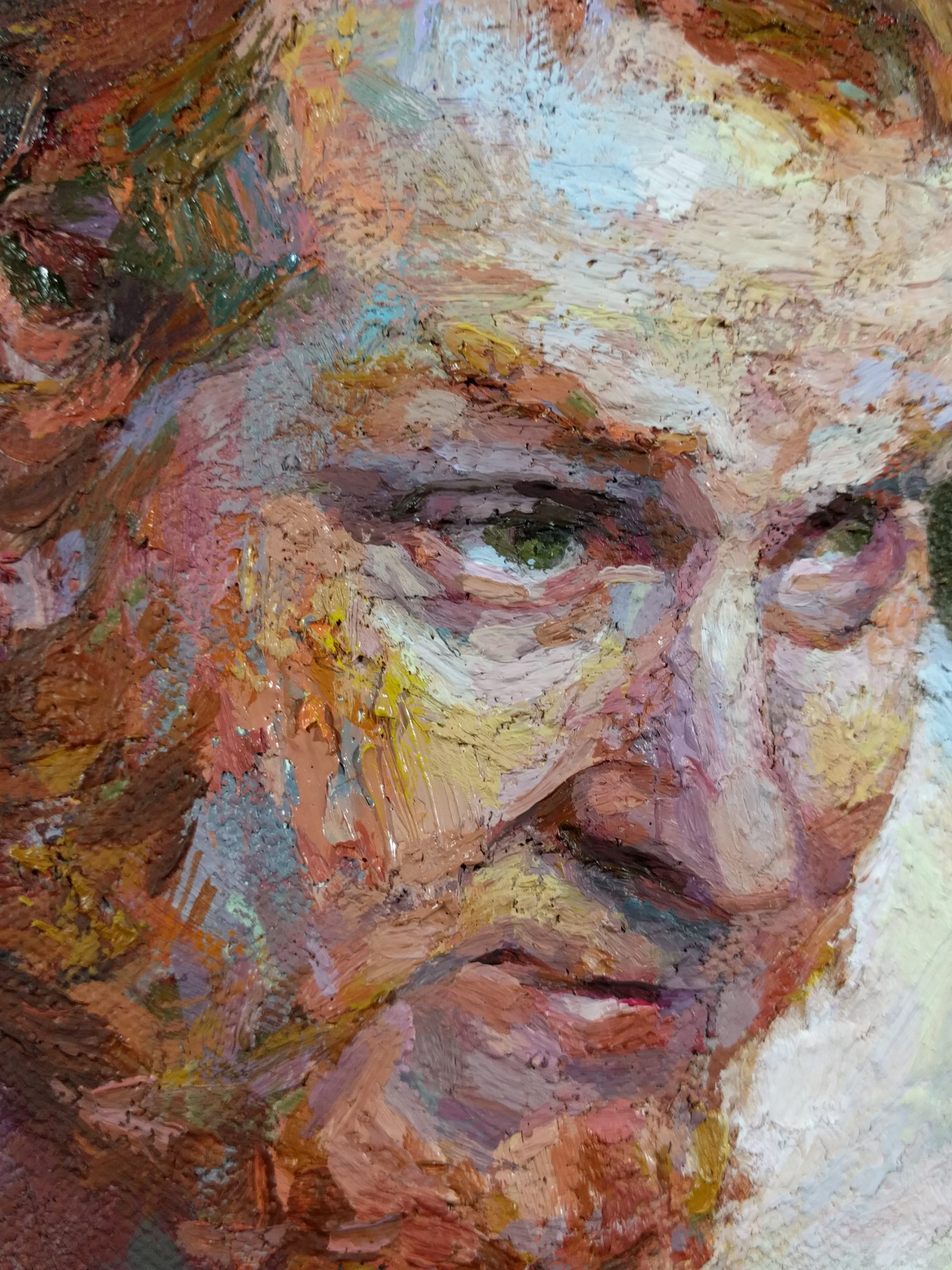Figurative Oil Painting: From Idea to Canvas - A Step-by-Step Method
Figurative Oil Painting: From Idea to Canvas - A Step-by-Step Method
Blog Article
The Role of Emotion and Expression in Figurative Oil Paint: An In-Depth Analysis of Topic and Make-up
The interplay of feeling and expression in figurative oil painting offers as an important lens through which one can take a look at the intricate partnership between subject matter and make-up. Artists harness various strategies, from color choice to brushstroke characteristics, to cultivate emotional vibration within their jobs.
Comprehending Feeling in Art
Feeling in art acts as a powerful avenue for expression, allowing artists to communicate complicated sensations through their work. In metaphorical oil paint, this psychological depth is typically represented through the depiction of the human number, recording the subtleties of human experience. The choice of subject, shade scheme, and brushwork all contribute to the emotional resonance of a piece.
Artists often attract upon individual experiences, social issues, or universal styles to evoke sensations in the visitor. For example, a portrait may reflect susceptability, while a dynamic number in movement can signify liberty or turmoil. These emotional threads connect the audience to the artwork, promoting a dialogue that transcends the visual medium.
Furthermore, the interplay between light and shadow can amplify emotional intensity, guiding the viewer's gaze and drawing focus to certain components within the make-up. Using appearance in oil paint additionally adds layers of complexity, welcoming a responsive action that improves the emotional experience. Overall, understanding feeling in art is critical for valuing the nuances that define figurative oil paint, as it changes simple representation right into an extensive exploration of the human condition.
Trick Components of Structure
In the realm of metaphorical oil paint, the composition works as the underlying structure that organizes aesthetic aspects and improves the emotional story. Vital components of make-up consist of balance, comparison, focal point, and rhythm, each adding to the general effect of the art work.
Balance refers to the circulation of aesthetic weight within the painting, which can be attained with symmetrical or unbalanced plans. A well-balanced make-up offers security, enabling the visitor to engage with the item harmoniously - figurative oil painting. Contrast, on the various other hand, includes comparing different components, such as light and dark or cozy and amazing shades, to direct the visitor's eye and evoke psychological reactions
The focal point is important, as it routes interest to the most substantial part of the painting, commonly highlighting the psychological core of the narrative. By skillfully incorporating these crucial aspects, artists can craft psychologically resonant and engaging metaphorical oil paints that mesmerize and involve their target market.
Subject and Its Influence
Subject issue plays a pivotal role in figurative oil painting, as it not just works as the foundation for the narrative yet additionally forms the visitor's analysis and psychological involvement with the art work. The selection of subject-- be it a singular figure, a group dynamic, or a thematic representation-- straight affects the psychological environment communicated to the audience.

For instance, pictures frequently stimulate personal links, revealing the details of human expression and character, while scenes depicting public activities can produce a sense of belonging or fond memories. Furthermore, the historical and social context of the subject enhances the visitor's understanding, triggering much deeper reflections on social norms, worths, and the human problem.
Various subject matters also produce differing levels of interaction; a significant conflict illustrated via figures in tension may evoke sensations of anxiety or empathy, while calm landscapes can invoke tranquility and consideration. Inevitably, the impact of topic in metaphorical oil paint is extensive, as it works as a conduit for emotional resonance, assisting the visitor's response and interpretation, and promoting a connection in between the viewer and the art work. This interaction is vital for the effective interaction of the musician's intent.
Strategies for Stimulating Sensations
The performance of metaphorical oil paint in conveying emotions is significantly influenced by the techniques employed by the artist. One of the most vital methods is making use of shade theory, where the tactical choice of shades can evoke particular emotional reactions. Warm colors, such as reds and oranges, frequently elicit feelings of passion or hostility, while cooler tones like blues and eco-friendlies have a tendency to evoke calmness or despair.
An additional crucial strategy is the control of light their explanation and shadow, known as chiaroscuro. This method boosts the three-dimensionality of numbers, producing remarkable contrasts that can magnify emotional deepness. The placement of light can guide viewers' feelings, highlighting certain elements of the composition.
Brushwork additionally plays a vital duty; loose, meaningful strokes can communicate energy and spontaneity, whereas smoother strategies may suggest peace or accuracy. The plan of subjects within the make-up can influence psychological effect. Close proximity can recommend intimacy, while range may suggest isolation.
Eventually, the combination of these strategies allows musicians to craft narratives that reverberate with the audience, changing a mere aesthetic experience into an expressive emotional trip. - figurative oil painting

Study of Remarkable Works
Checking out noteworthy jobs of metaphorical oil painting discloses just how various methods are used to stimulate powerful emotions. One exemplary situation is Edvard Munch's "The Scream," where the altered number and swirling background convey existential fear. Munch's use shade-- deep blues and brilliant oranges-- escalates the emotional impact, showcasing exactly how combination selections can form visitor experience.
An additional substantial job is Pablo Picasso's "Les Demoiselles d'Avignon." Below, strong brushstrokes and fragmented types reflect a turbulent emotional landscape, challenging conventional representations of the female figure. Picasso's cutting-edge make-up not just catches the customer's interest but also welcomes reflection on styles of identity and sexuality.
Additionally, Frida Kahlo's "Both Fridas" supplies an emotional expedition of duality and self-identity. The contrasting numbers, connected by a shared heart, exemplify Kahlo's psychological deepness and personal story. figurative oil painting. Her thorough interest to detail and symbolic components offer to engage viewers on a natural level
These case researches highlight the profound link between emotion and structure in metaphorical oil paint, exposing how musicians harness technique to communicate complex sensations and stories that resonate throughout time and society.

Verdict
To conclude, the interaction of emotion and expression in metaphorical oil paint substantially enhances the customer's experience and analysis of the artwork. With a careful selection of topic and compositional methods, musicians convey profound stories that resonate on both personal and global levels. The application of shade brushwork, chiaroscuro, and concept further magnifies you can check here psychological depth, transforming each canvas into an effective representation of the complexities of the human experience.
In figurative oil painting, this psychological deepness is often view website depicted with the representation of the human number, capturing the nuances of human experience.Furthermore, the interaction in between light and darkness can amplify emotional intensity, directing the customer's stare and attracting focus to particular elements within the composition. The use of structure in oil painting even more adds layers of intricacy, inviting a tactile action that improves the psychological experience.The focal factor is critical, as it routes focus to the most considerable component of the paint, commonly highlighting the emotional core of the narrative. Ultimately, the impact of subject matter in metaphorical oil paint is extensive, as it offers as a channel for emotional resonance, directing the audience's reaction and interpretation, and fostering a link in between the onlooker and the artwork.
Report this page